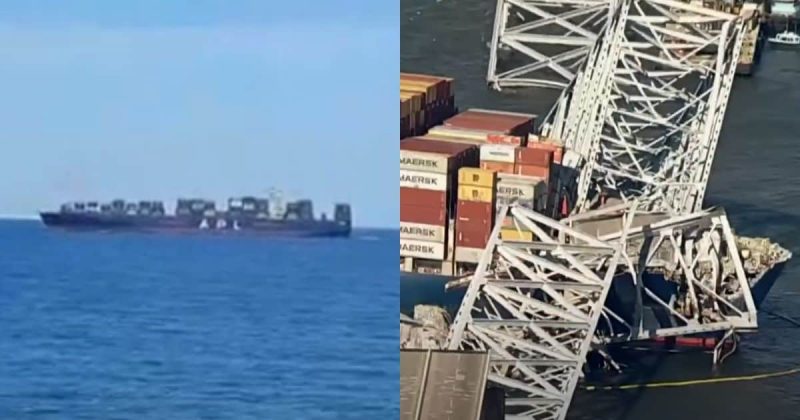A misinstalled signal wire caused the catastrophic power failure that sent a massive cargo vessel crashing into Baltimore’s Francis Scott Key Bridge, federal investigators concluded Tuesday.
The National Transportation Safety Board delivered its final verdict on the March 26, 2024 disaster, pointing to a chain of preventable failures that led to the deadly collapse.
The NTSB determined that improper installation of wireless label banding created a loose connection in the Dali’s electrical system.
That single faulty wire triggered a complete power blackout, leaving the container ship without propulsion or steering as it drifted toward the bridge support pier.
The board’s findings placed blame squarely on multiple parties.
Investigators cited the Maryland Transportation Authority for failing to conduct basic safety assessments that could have protected the structure from ship strikes.
“The National Transportation Safety Board determines that the probable cause of the contact of the container ship Dali with the Francis Scott Key Bridge was a loss of electrical power blackout due to a loose signal wire connection to a terminal block stemming from the improper installation of wireless label banding,” the board stated in its report.
When the blackout struck, the Dali’s crew responded immediately to restore power. However, investigators found they simply ran out of time.
The ship’s position relative to the bridge, combined with delays in restarting critical systems, made the collision inevitable.
The report revealed that Maryland officials never performed a vulnerability assessment of the bridge. This type of evaluation, recommended by the American Association of State Highway and Transportation Officials, identifies protective measures against vessel impacts.
The NTSB concluded that the absence of such countermeasures contributed directly to the collapse. Had Maryland conducted the assessment, protective systems could have been installed to prevent or mitigate damage from oceangoing vessels.
Beyond the faulty wire and missing safety measures, investigators uncovered operational problems aboard the Dali. The ship’s crew had been misusing a flushing pump as a service pump, a practice that limited the vessel’s ability to recover power after the blackout occurred.
The ship’s operator, Synergy Marine Group, failed to detect or stop this improper equipment use. NTSB engineer Bart Barnum testified that Synergy’s oversight proved inadequate.
“Staff found that Synergy operational oversight was inadequate because it did not discontinue crew’s ongoing use of the flushing pump as a service pump for the diesel generators aboard the Dali, and at least one other vessel,” Barnum said during the proceedings, Fox News reported.
The board also faulted Synergy for operating critical electrical systems in manual mode rather than automatic. This configuration hampered the Dali’s recovery efforts after power failed, further reducing the crew’s options for avoiding disaster.
Communication breakdowns added another layer to the tragedy. Highway workers on the bridge received no timely warnings about the approaching vessel. They had no opportunity to evacuate before the spans collapsed into the Patapsco River.
The NTSB’s conclusions arrived one day after Maryland officials disclosed major setbacks in reconstruction efforts. The project timeline has stretched by two years, and costs have more than doubled from initial projections.
State engineers now expect completion in 2030 rather than the originally planned 2028. The price tag has ballooned to $5.2 billion, Fox said, significantly exceeding the $1.9 billion estimate used to secure federal funding.

